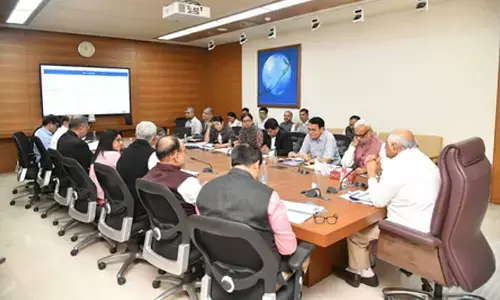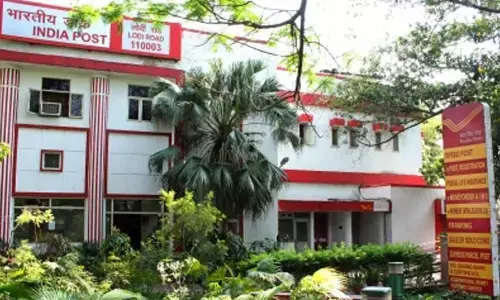GST makes jewellery dearer

Jewellers in Telangana and Andhra Pradesh are expressing their concern that jewellery prices under GST are set to rise by about 5 per cent, while bullion merchants fear that high tax regime will result in more unofficial imports of gold.
Higher taxes will encourage smuggling, say traders
Hyderabad: Jewellers in Telangana and Andhra Pradesh are expressing their concern that jewellery prices under GST are set to rise by about 5 per cent, while bullion merchants fear that high tax regime will result in more unofficial imports of gold.
The net effective surge in taxes is estimated at 3.24 per cent. Apart from 3 per cent GST, tax on manufacturing charges and other operational costs will add to the consumer price, pushing the prices by 5 per cent, says Pravin Kumar, secretary of the Twin Cities Jewellers’ Association.
Bullion and jewellery sectors seek clarity on standardised billing procedure for selling gold jewellery. Jewellers across the country are not happy with the 3 per cent rate fixed on gold jewellery under the Goods and Services Tax (GST).
Currently, gold jewellers pay 1 per cent excise duty and 1.2 per cent value-added tax (VAT) and 10 per cent customs duty on gold imports. This effectively works out to 12.43 per cent.
“With the introduction of GST at 3 per cent for gold and 18 per cent on making charges, and keeping customs at 10 per cent, the effective rate comes to 15.67 per cent.
So, the effective tax escalation on gold jewellery comes to 3.24 percentage points,” Pravin Kumar told The Hans India.
After touching the record import level of 1,079 tonne in 2011, gold imports kept on declining over the years. Imports were 949 tonne in 2015, 582 tonnes in 2016 and 249 tonne in 2017 till April.
Demonetisation resulted in more demand for gold. The reason for drop in imports is higher tax regime, says Burugu Mahabaleshwara Rao, president of the AP Bullion Merchants’ Association.
“Higher taxes will discourage official gold imports and result in more unofficial imports. Government spends forex more on crude oil and gold. Hence, the Centre wants to discourage gold imports and increased taxes under old regime. Latest GST will further increase tax burden on gold consumers,” adds Rao.
As per the rough estimates, both the Telugu states account for about 75-100 tonne of gold annually, while Hyderabad gets lion’s share in this.
Telangana and AP bullion and jewellery markets consume 500 kg of gold daily, including 300 kg from Hyderabad alone and this includes fresh and recycled gold.
Another leading jeweller from the association on a condition of anonymity said: “If a person buys gold worth Rs 100 and pays Rs 3 GST, the total cost for gold will work out to be Rs 103. Now, after six months, if he wants to sell this gold and presuming that the gold price remains constant, he will get Rs 100 and the GST amount would be lost at the consumer level. So far, VAT is just 1 per cent.
So, the transaction impact cost has increased from 1 per cent to 3 per cent.” At present, there is no service tax on making charges of jewellery. So, GST rate on making charges of jewellery falls within the 18 per cent tax bracket.
Assuming a customer typically pays 12 per cent of the gold value as making charges, gold jewellery could become costlier when 18 per cent GST on making charges included, he explained.















